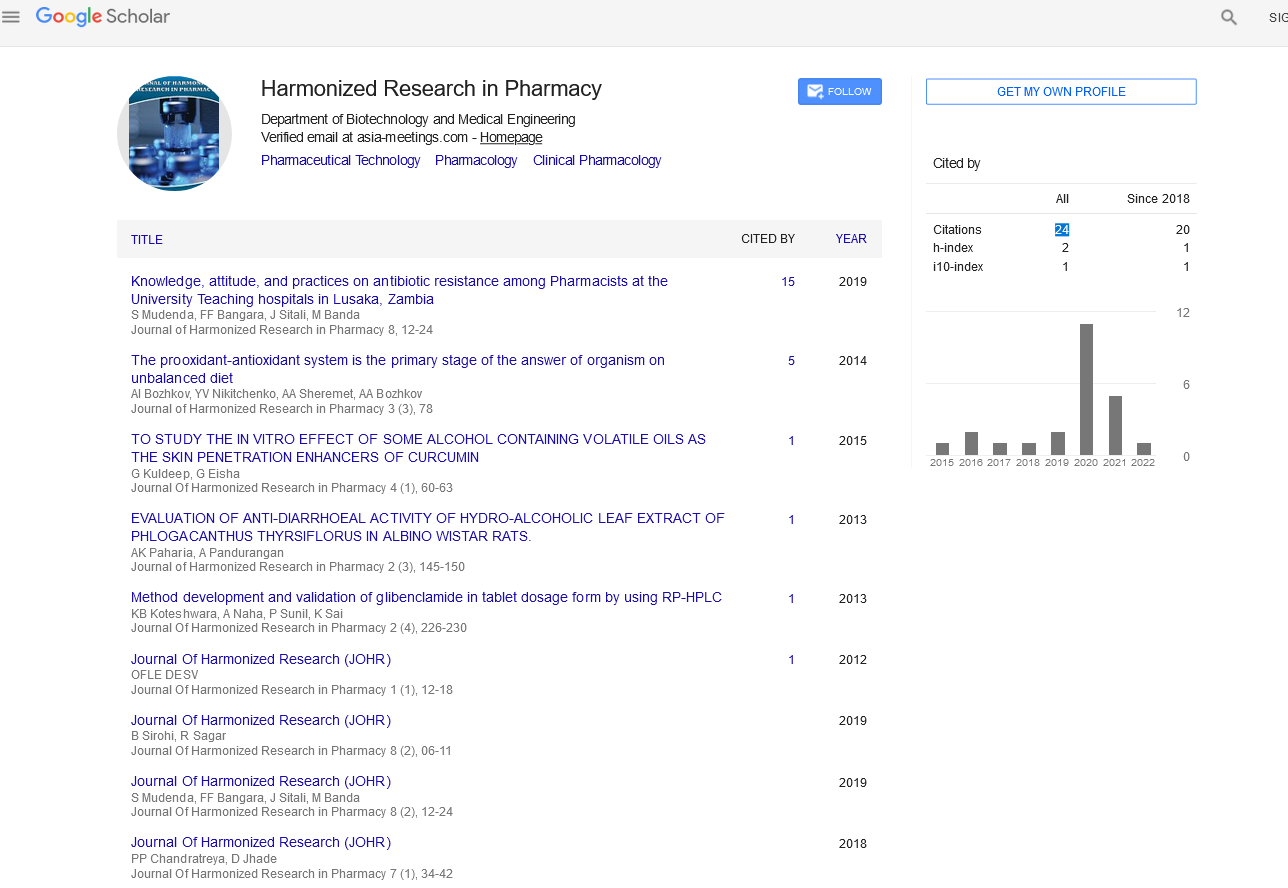Short Communication - (2022) Volume 11, Issue 4
PHARMACEUTICAL BIOTRANSFORMATION BY ANTIBODIES AND BACTERIAL STRAINPHARMACEUTICAL BIOTRANSFORMATION BY ANTIBODIES AND BACTERIAL STRAIN
Fischer Hull*Received: Nov 28, 2022, Manuscript No. JHRP-22-84136; Editor assigned: Dec 02, 2022, Pre QC No. JHRP-22-84136 (PQ); Reviewed: Dec 16, 2022, QC No. JHRP-22-84136; Revised: Dec 23, 2022, Manuscript No. JHRP-22-84136 (R); Published: Dec 30, 2022, DOI: 10.30876/2321-0958.22.11.190
Description
Antibiotics were first discovered in the 19th century, and their development significantly changed the mortality and morbidity rates linked with life-threatening illnesses. These physiologically active compounds have since become essential for preserving human health and boosting living standards. Antibiotics are frequently used in veterinary medicine and aquaculture research, in addition to for human health, to treat infections and promote animal growth. According to reports, between 2000 and 2015, the amount of antibiotics consumed globally rose by 65%, from 21.1 to 34.8 billion DDD (Defined Daily Doses). Antibiotics are used so often that there are now worries about their remaining in the environment for longer periods of time. This is explained by their incomplete metabolism in both human and animal bodies, which leads to their release in an active state. Antibiotic overuse leads to the emergence of drug resistance in people, animals, and pathogenic microorganisms, making medications ineffective against infections. In addition to causing pathogenic resistance, antibiotics have adverse effects on the composition and functioning of ecological systems. Biological diversity is essential for maintaining ecological processes and biogeochemical cycles, which are frequently mediated by a population of microorganisms. Antibiotics reduce biodiversity by killing or limiting non-target microbial species, which ultimately has an effect on typical biological functions like nitrogen fixation, biomass production, and functional stability.
The primary regions where antibiotics are thought to be widely released into the environment are believed to be home, pharmaceutical, and hospital effluents. If they are not properly treated in sewage treatment plants for the breakdown and elimination of such active compounds, these effluents eventually find their way into the natural environment, including soil, surface water, and ground water. Numerous studies have revealed that a range of antibiotics have been discovered in natural water supplies and wastewater treatment facilities.
To date, a number of non-biotic and chemical technologies, including highly advanced oxidative and adsorptive processes, have been developed and used to remove organic contaminants. Such methods are ineffective for use on a large scale because to their complexity, high prices, and challenges with chemical sludge disposal. Biotransformation has been used to transform a variety of organic contaminants, including metals, medicines, and hydrocarbons, over the years. It has proven to be a safe and economical method for acclimating the environment. The demonstrated catabolic variety, growth pace, and ability of microorganisms to engage in horizontal gene transfer all contribute to their suitability as a candidate for this process.
Most biotransformation research has made use of mixed cultures that have been isolated from soil or sewage sludge sources. Bacterial strains from sewage sludge, such as Achromobacter denitrificans PR, Pseudomonas, and Arthrobacter species, have successfully biodegraded sulphonamides, this study shows that how a mixed culture of bacteria from the groups Bacteroidia, Gammaproteobacteria, and Betaproteobacteria could break down the antibiotic ciprofloxacin. For the purpose of removing gentamicin from waste generated during production, the AMQD4 consortia were discovered. Only a small number of investigations, except those involving fungal isolates, have documented the biotransformation of certain antibiotics by pure cultures.
Conclusion
The current study is based on the isolation and molecular characterization of bacterial strains that are resistant to antibiotics from pharmaceutical and home effluents and has the ability to significantly degrade the majority of persistent antibiotics in the environment. To maximise antibiotic breakdown, variables including pH, temperature, inoculum size, and growth period were optimised. Additionally, the biotransformation effectiveness of these isolates was assessed in order to create a viable and affordable strategy for the extensive cleanup of polluted settings.
References
- Choi E, Lindquist R, Song Y. Effects of problem-based learning vs. traditional lecture on Korean nursing students' critical thinking, problem-solving, and self-directed learning. Nurse Educ Today. 2014;34(1):52-56.
[Crossref], [Google Scholar], [Pubmed]
- Dolmans DH, De Grave W, Wolfhagen IH, Van Der Vleuten CP. Problem‐based learning: Future challenges for educational practice and research. Med Educ. 2005;39(7):732-741.
[Crossref], [Google Scholar], [Pubmed]
- Knowles MS. The Modern Practice of Adult Education; Andragogy versus Pedagogy. 1970.
- Kong LN, Qin B, Zhou YQ, Mou SY, Gao HM. The effectiveness of problem-based learning on development of nursing students’ critical thinking: A systematic review and meta-analysis. Int J Nurs Stud. 2014;51(3):458-469.
[Crossref], [Google Scholar], [Pubmed]
- Lekalakala-Mokgele E. Facilitation in problem-based learning: Experiencing the locus of control. Nurse Educ Today. 2010;30(7):638-642.i
[Crossref], [Google Scholar], [Pubmed]

Google Scholar citation report
Citations : 147
Journal of Harmonized Research in Pharmacy received 147 citations as per google scholar report









